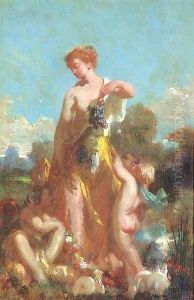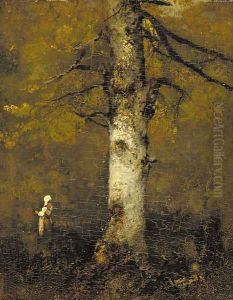Narcisse-Virgile De Az De La Pena Paintings
Narcisse-Virgile Diaz de la Peña, born on August 20, 1807, in Bordeaux, France, was a notable painter of the 19th century. He was of Spanish descent but spent the majority of his life and career in France. Orphaned at a young age, Diaz was raised by a priest whom he left at age 15 to become an apprentice to a porcelain painter. His early career involved decorative work on porcelain and creating lithographs, but it was in painting that he truly found his calling.
Diaz’s artistic style was significantly influenced by the Barbizon school, a group of artists who advocated for realism in art and painted nature directly from life. Despite not being an official member of the school, Diaz was closely associated with prominent figures within the movement, such as Théodore Rousseau and Jean-François Millet. He was particularly known for his forest scenes of the Fontainebleau Forest, a common subject among Barbizon painters. Diaz’s work also incorporated elements of Romanticism, evident in his use of vibrant colors and dramatic lighting, which gave his landscapes and figure paintings a distinctive and emotive quality.
Apart from landscapes, Diaz also painted Orientalist subjects, influenced by the 19th-century fascination with the exotic and the East. His works in this genre are characterized by rich colors and elaborate detail, capturing the lushness and opulence associated with Oriental scenes. Additionally, Diaz was skilled in painting nudes and mythological scenes, often imbued with a sense of fantasy and eroticism.
Diaz exhibited regularly at the Paris Salon, receiving accolades for his artistic achievements. His success brought him financial stability and allowed him to mentor younger artists, contributing to the development of the Impressionist movement. Despite suffering from a devastating leg injury in his youth, which led to the amputation of his leg, Diaz continued to paint prolifically until his death. He passed away on November 18, 1876, in Menton, leaving behind a rich legacy that influenced the trajectory of French painting in the latter half of the 19th century. Diaz’s works continue to be celebrated for their vibrant colorism and innovative approach to landscape and genre painting.

